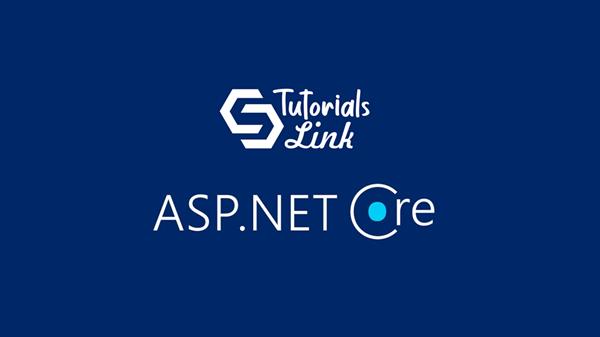Headless CMS Integration: Powering Dynamic Content in ASP.NET Core Websites
In today's digital landscape, websites are no longer static brochures. They are dynamic platforms that thrive on fresh, engaging content. This is where ASP.NET Core, a powerful open-source web framework from Microsoft, shines. When combined with a headless CMS (Content Management System), ASP.NET Core empowers developers to craft highly scalable and content-driven websites.
What is a Headless CMS?
A headless CMS separates the content creation and management interface (backend) from the presentation layer (frontend). This decoupled architecture offers numerous advantages:
- Flexibility: Developers have complete control over the front end using their preferred technologies like HTML, CSS, JavaScript frameworks (React, Angular, Vue.js), or server-side rendering engines (Razor Pages). This flexibility fosters a superior user experience (UX) and a visually stunning website.
- Agility: Content creators can add, edit, and publish content without relying on developers. This empowers a streamlined content workflow and faster time-to-market for updates.
- Scalability: Headless CMS integrations enable websites to scale effortlessly. The backend can handle a surge in traffic without impacting the frontend's performance. This is because the content is delivered via APIs (Application Programming Interfaces), ensuring a smooth user experience.
- Omnichannel Delivery: Content created in a headless CMS can be distributed across various platforms (web, mobile apps, single-page applications (SPAs)) seamlessly. This approach fosters content consistency and reduces redundancy.
Why Use Headless CMS with ASP.NET Core?
ASP.NET Core boasts several features that make it an ideal partner for headless CMS integration:
- Robust MVC (Model-View-Controller) Pattern: The MVC pattern promotes clean separation of concerns (business logic, data access, UI), allowing developers to integrate the headless CMS seamlessly.
- API-first Approach: ASP.NET Core excels at building secure and efficient APIs for content retrieval and manipulation.
- Dynamic Content Rendering: ASP.NET Core supports various ways to render dynamic content, including Razor Pages and server-side model binding, ensuring a smooth integration with headless CMS content.
Integrating a Headless CMS with ASP.NET Core
The specific integration process will vary depending on the chosen headless CMS. However, here's a general guideline:
-
Choose a Headless CMS: Popular options include Contentful, Prismic, Umbraco Heartcore, and Orchard Core. Consider factors like ease of use, pricing, feature set, and developer community support.
-
Establish an API Connection: Most headless CMS solutions provide well-documented RESTful APIs for data access. Utilize ASP.NET Core's HttpClient class to interact with the CMS API and retrieve content.
-
Model Content: Create classes in your ASP.NET Core project to represent the content structure exposed by the headless CMS API. Use libraries like AutoMapper to simplify content object mapping between the CMS and your application models.
-
Content Delivery and Presentation: Develop controllers and views in your ASP.NET Core application to handle content retrieval from the headless CMS and present it on the front end using your chosen templating language or framework.
Benefits of Headless CMS Integration
- Improved Developer Experience: Developers can focus on building the core functionalities and user interface without being bogged down by content management complexities.
- Enhanced Content Management: Content creators can add, edit, and publish content efficiently through a user-friendly CMS interface.
- Omnichannel Content Delivery: Content can be delivered seamlessly across various platforms, ensuring consistency and reducing redundancy.
- Scalability and Performance: The decoupled architecture enables independent scaling of the backend and front end, ensuring optimal performance under heavy traffic.
- Future-Proof Development: Headless CMS adoption future-proofs your website by separating content from presentation. This allows for easier integration with new technologies and frontend frameworks as they emerge.
Example: Blog with ASP.NET Core and Headless CMS
Here's a simplified example to illustrate the concept:
- A blog website is built using ASP.NET Core.
- Contentful is chosen as the headless CMS
- The ASP.NET Core application utilizes Contentful's Delivery API to retrieve blog posts, categories, and author information.
- Models are created in the ASP.NET Core project to represent Contentful's content structure (e.g., BlogPost, Category, Author).
- Controllers are developed to handle API calls to Contentful and retrieve the necessary content.
- Razor Pages are created to display blog posts, along with functionalities for filtering by category or author (using data retrieved from Contentful). These pages utilize model binding to populate the UI with dynamic content.
- Images and other media assets associated with blog posts are stored in a Content Delivery Network (CDN) for optimal performance and global accessibility.
This is a simplified example, but it demonstrates the core concepts of integrating a headless CMS (Contentful) with ASP.NET Core to build a dynamic and content-driven blog website.
Conclusion
Headless CMS integration empowers developers to leverage ASP.NET Core's strengths in building modern, scalable, and content-rich websites. The decoupled architecture offers flexibility, agility, and future-proof development, allowing websites to adapt and evolve in the ever-changing digital landscape. By combining the power of ASP.NET Core with a headless CMS, developers can create exceptional web experiences that cater to today's content-hungry audience.





